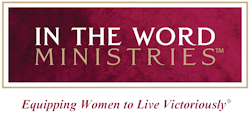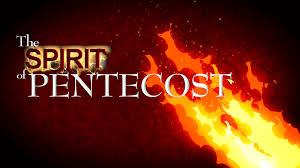“But ye shall receive power, after that the Holy Ghost is come upon you.” Acts 1:8a (KJV)
This past Sunday was designated as Pentecost on the Christian calendar. It is celebrated in churches across the nation and around the world fifty days after Easter.
Pentecost or the Feast of the Weeks, was one of the three major feasts mandated by God for the Jewish people to observe (Deut. 16:16; Ex. 23:14, 15). It is to be celebrated fifty (50) days after the Passover Feast. With the completed work of salvation by Jesus Christ—His crucifixion, resurrection, and ascension—Pentecost now takes on a new dimension and meaning for Christians with the arrival of the promised Holy Spirit (Acts 2). It was the Holy Spirit’s indwelling presence that would enable Jesus’ disciples to continue the work He had begun. As importantly, Pentecost marked the availability of the Holy Spirit to everyone who would “call upon the name of Jesus” (Rom. 10:13; Acts 2:38); collectively, individuals responding in faith would form the Church promised by Jesus to His disciples (Matt. 16:18).
While we may know about the various ministries of the Holy Spirit, it is even more important to fully grasp the enormity of His Presence within us. Deity is living within us! I love the way Jesus described this phenomenon: “I (Jesus) in them (Believers) and You (God) in me, (so) that they may be made perfect in one” (John 17:23a). Like the disciples on the day of Pentecost we are in need of the Holy Spirit’s power and direction as we live for God’s glory. Pentecost is not only a day on the church calendar but it is an invitation to join with the Triune God in Their ministry of deliverance, wholeness, and grace (Eph. 2:10).
Stormie Omartian describes our ministry with the Holy Spirit this way:
God wants to lead you to places you cannot get to without Him, and He does that by the power of His Spirit. He can bring you into the realm of the miraculous—not as a show, but as a demonstration of His love and compassion for the lost, hurting, or needy. Who among us doesn’t want or need that?
Good to the Last Byte…
The Christian calendar is organized around two major centers of Sacred Time: Advent, Christmas, and Epiphany; and Lent, Holy Week, and Easter, concluding at Pentecost. The rest of the year following Pentecost is known as Ordinary Time, from the word “ordinal,” which simply means counted time (First Sunday after Pentecost, etc.). Ordinary Time is used to focus on various aspects of the Faith, especially the mission of the church in the world. Some church traditions break up ordinary time into a Pentecost Season, (Pentecost until the next to last Sunday of August) and Kingdomtide (last Sunday of August until the beginning of Advent).

